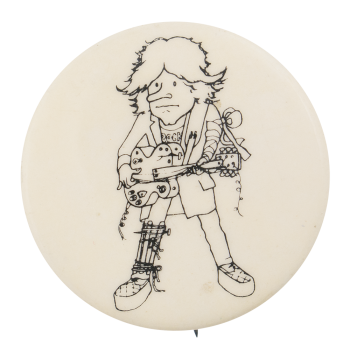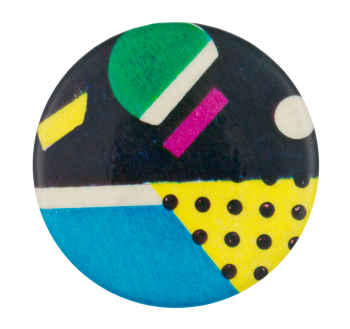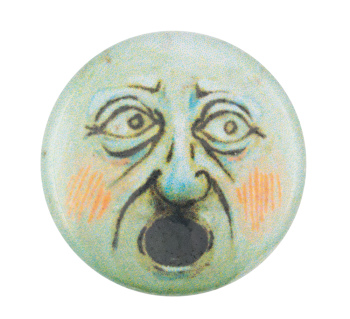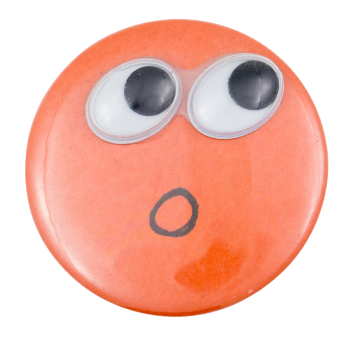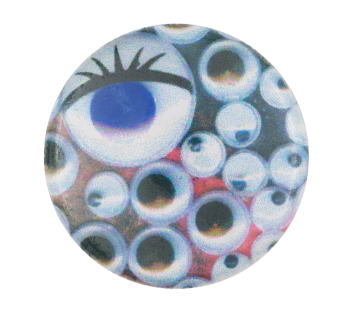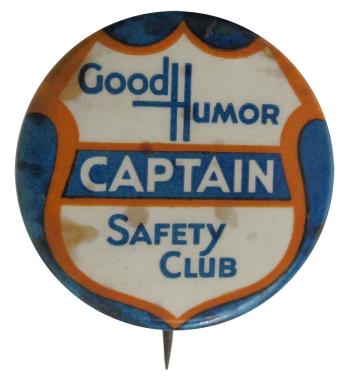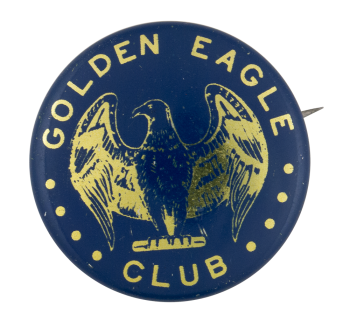Dave Edmund Twangin
| Category | |
|---|---|
| Additional Images | |
| Sub Categories | |
| Text on Button | ROCK |
| Image Description | An illustration of a guy with shaggy hair playing a cracked guitar with broken strings. He is wearing a blazer and a t-shirt that says "ROCK", and platform shoes. His left arm is bandaged and his right leg is wrapped with a wooden splint. The background is white and the illustration is outlined in black. |
| Back Style | |
| The Shape | |
| The Size | |
| Year / Decade Made | |
| Additional Information | The figure found on this button is from a record sleeve found in Dave Edmund’s album Twangin… The album was released in 1981 by the label Swan Song. Dave Edmunds is a Welsh singer mainly associated with pub rock and new wave music. Many of the songs he produced were covers of other songs that he reworked to fit his style. His most recent album was released in 2013 and contained 5 new vocal recordings, the first in nearly 2 decades for him. |
| Sources |
Erlewine, S. (n.d.). Dave Edmunds | Music Biography, Streaming Radio and Discography | AllMusic. Retrieved from http://www.allmusic.com/artist/dave-edmunds-mn0000584923. |
| Catalog ID | MU0156 |

